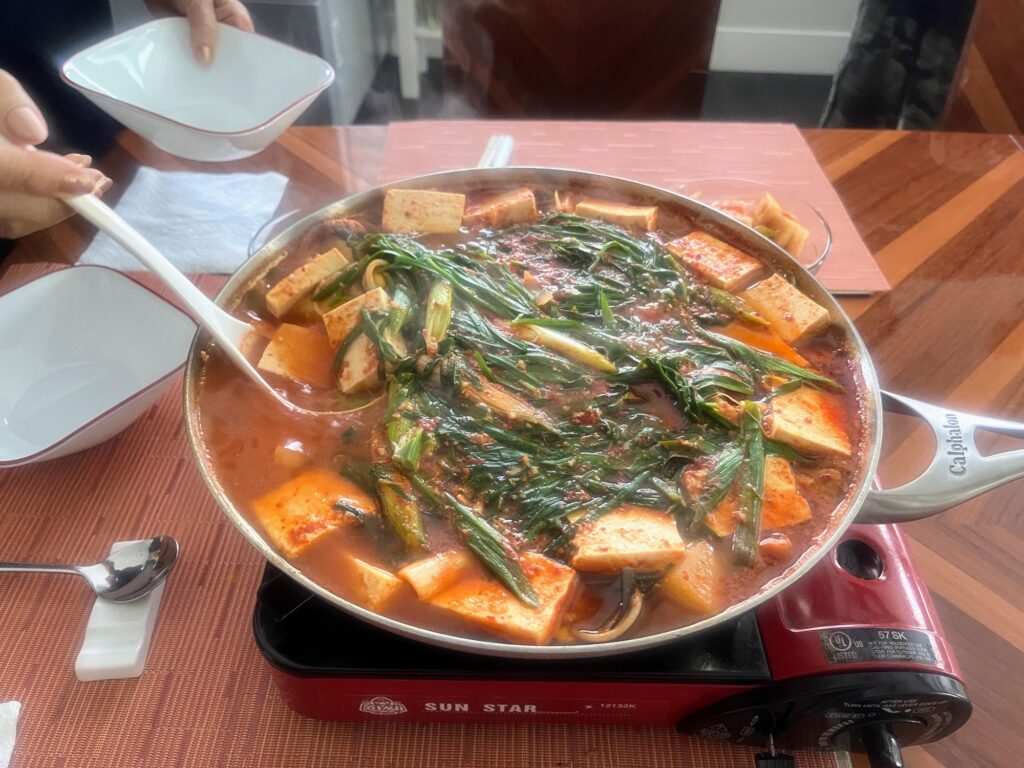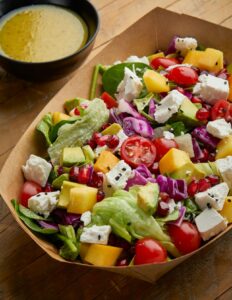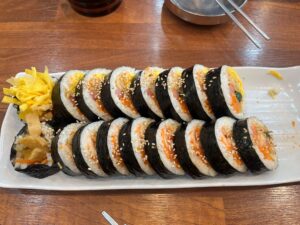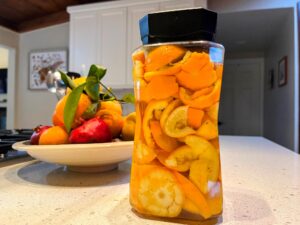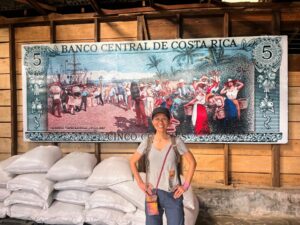If you love bold, comforting flavors, this Korean seafood stew recipe—known as Haemultang—is a must-try. Packed with tender fish, juicy shrimp, tofu, and nourishing vegetables, it’s a spicy and satisfying soup that warms you from the inside out. Whether you enjoy seafood or prefer a plant-based version with shiitake mushrooms, this dish is easy to make at home and full of rich Korean flavors.
In this post, I’ll show you how to make Haemultang with step-by-step instructions for both classic and vegan versions.
Why Korean Seafood Stew Is One of My Favorite Dishes
There’s something about a bubbling pot of Korean seafood stew that brings me right back to my roots. Growing up, dishes like this weren’t just meals—they were moments. I remember sitting at the table with my family, steam rising from the hot pot, and everyone reaching in for their favorite piece of seafood or tofu.
Even now, this stew still feels like a hug in a bowl. I love making it on chilly evenings or when I’m missing Korean food from home. The bold flavors, the tender fish, the spicy broth—they all come together in such a comforting way.
What I also love is how flexible this dish can be. Sometimes I go all out with shrimp, clams, and calamari. Other times, I keep it simple with just tofu and shiitake mushrooms. Either way, it never disappoints. It’s warm, filling, and always brings me a little joy.
The Origins of Haemultang

Korean seafood stew, known as Haemultang, is more than just a spicy soup—it’s a beloved dish that reflects the heart of Korean cooking. In many coastal towns across Korea, fresh seafood is a staple, and this stew brings together the best of the ocean with bold, spicy flavors.
Traditionally, Haemultang is served family-style in a large bubbling pot, often right at the table. It’s the kind of dish that invites conversation, sharing, and lots of second servings.
Each household makes it a little differently—some add crab, others include more tofu or leafy greens like Mugwort. But the base always stays the same: a rich, spicy broth filled with seafood, vegetables, and warmth.
Over time, Korean seafood stew has become a popular comfort food, not just in Korean homes but in restaurants around the world. Whether enjoyed as a hangover cure or a hearty dinner on a cold night, Haemultang continues to be a flavorful symbol of Korean hospitality and tradition.
Health Benefits of Korean Seafood Stew Ingredients
Korean seafood stew isn’t just comforting—it’s full of healthy ingredients. Fish and shrimp provide lean protein and heart-healthy omega-3s, while tofu and Korean soybeans offer plant-based protein, fiber, and minerals.
Even in the vegan Korean seafood stew recipe, ingredients like shiitake mushrooms, radish, and kombu create a nutritious, cleansing broth. Mugwort, often added to this Korean seafood stew, has been used in Korean medicine for digestion and detox.
The gochujang and red pepper flakes don’t just add heat—they may help boost metabolism and keep you feeling full longer. No matter how you make it, this stew is a flavorful and nourishing choice.
Korean Seafood Stew (Haemultang) Recipe
This spicy Korean seafood stew is warm, comforting, and full of bold flavors. Whether you go with seafood or keep it plant-based, this Haemultang recipe is a healthy and satisfying dish you can enjoy at home.
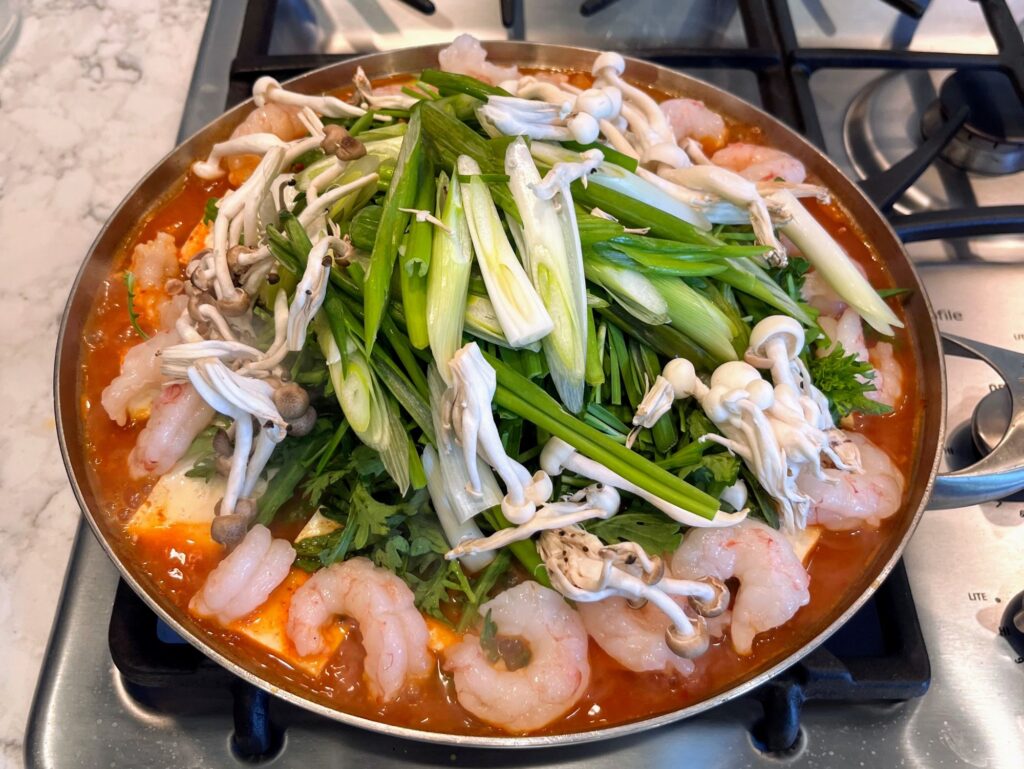
Ingredients (Serves 4)
6 cups water
2 cups Korean radish, cubed
2–3 pieces dried kombu (kelp)
1½ tbsp sea salt
½ – ¾ lb sea bass, cut into large pieces
5 – 8 large shrimp, peeled and deveined
Optional: a few mussels, clams, or calamari rings
6 – 8 large dried shiitake mushrooms (soaked and sliced)
½ block firm tofu, cubed
2 cups of sprouted Korean soybeans (available at Korean markets)
1 small sweet onion, sliced
2 green onion stems, slivered
1 cup chives, cut into 2” pieces (optional)
2 cups mugwort (optional)
Seasoning paste:
5 garlic cloves, minced
1 tbsp sesame oil
1 tbsp gochujang (Korean red pepper paste)
5 tbsp gochugaru (Korean red pepper flakes—not powder)
¼ cup warm water
For vegan version: Simply leave out the seafood and follow the same instructions using the mushrooms and tofu as your main proteins.
Instructions:
Start with a flavorful broth
To build the base of your Korean seafood stew recipe, combine water, cubed radish, dried kombu, and sea salt in a large pot. Bring it to a boil, then reduce the heat and let it simmer gently for 30 minutes. The longer it cooks, the richer the broth becomes.Add the seasoning and vegetables
Next, stir in the seasoning paste, along with sliced sweet onion and shiitake mushrooms. Let everything simmer together for 5–10 minutes to blend the spicy and savory flavors.Add seafood except for shrimp
Now add the sea bass and any optional seafood like mussels, clams, or calamari. Let it cook for a few minutes so the seafood flavors infuse into your Korean seafood stew.Layer in the soybeans
Sprinkle in the Korean soybeans across the top, cover the pot, and simmer for another 5–7 minutes. This adds a hearty texture and extra nutrition to your Haemultang recipe.Finish with shrimp, tofu, and greens
Finally, add the shrimp, tofu cubes, mugwort, green onions, and chives (if using). Cover and bring the stew to a gentle boil—this final step brings everything together without overcooking the delicate shrimp.Serve and enjoy
Your spicy Korean seafood stew is now ready to serve! You can enjoy it straight from the pot or transfer it to a portable stove at the table to keep it bubbling. Start by eating the vegetables and tofu while the seafood continues to soak up the broth.
Tips for Making Korean Seafood Stew
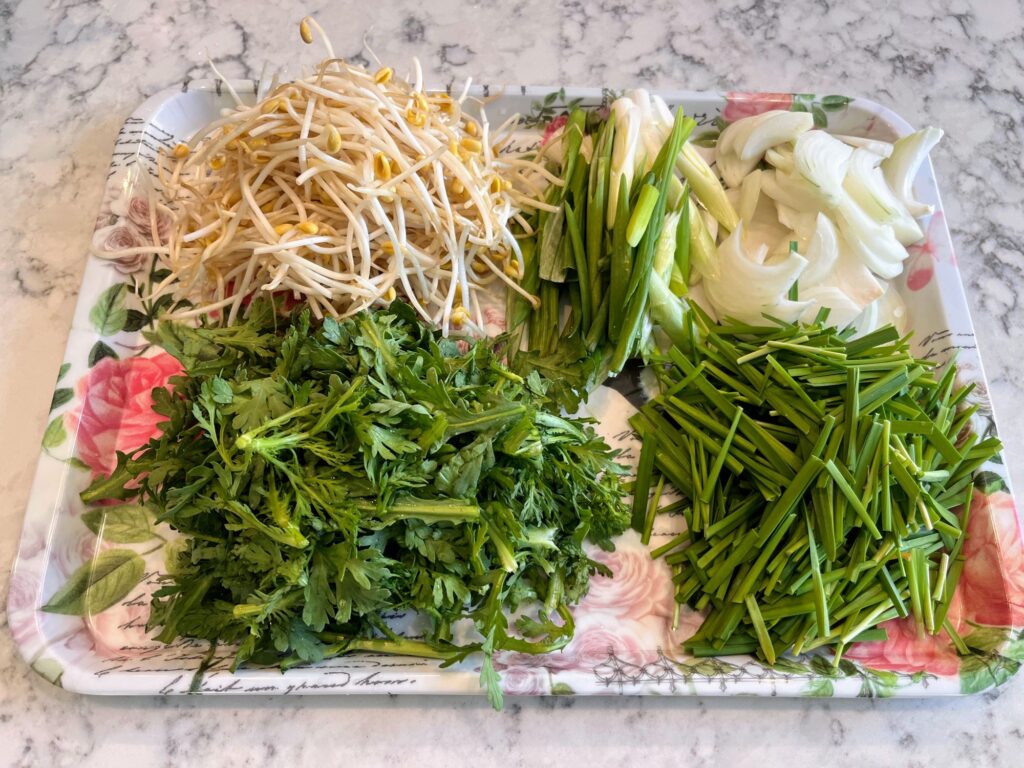
If you’ve never made Korean seafood stew before, it might seem a little intimidating—but don’t let that stop you. Prepping your ingredients ahead of time will make a big difference.
Slice the onions, soak the mushrooms, and mix your seasoning paste before you start cooking. It helps things move quickly once the pot is on the stove.
It also helps to group your ingredients by when they’ll be added to the stew. Keep seafood, tofu, and vegetables in separate bowls so you’re not rushing to figure out what goes in next. This is especially helpful if you’re making this Haemultang recipe for the first time.
And if you’re cooking for family or friends, bring the pot straight to the table on a portable burner. One of the best parts of enjoying Korean seafood stew is eating it while it’s still simmering—it turns dinner into a fun and cozy experience.
Bringing Haemultang to Your Table
Korean seafood stew is more than just a meal—it’s an experience that brings warmth, flavor, and comfort to the table. Whether you go with the traditional version loaded with seafood or try the lighter, plant-based twist, this Haemultang recipe offers something deeply satisfying.
From the rich broth to the layers of vegetables, tofu, and spices, every bite reminds me why this dish has stayed close to my heart. It’s a great way to share Korean culture, explore bold flavors, and nourish your body all at once.
So if you’re looking to try something new, or craving a cozy bowl of something homemade, give this stew a try. You might just find yourself making it again and again.

